Applying the Field Dressing
Field Dressing
- Use the casualty’s field dressing; remove it from the wrapper and grasp the tails of the dressing with both hands
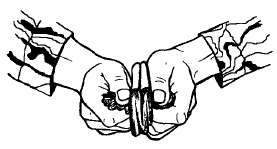
WARNING DO NOT touch the white (sterile) side of the dressing, and DO NOT allow it to come in contact with any surface other than the wound.
2. Hold the dressing directly over the wound with the white side down. Pull the dressing open and place it directly over the wound
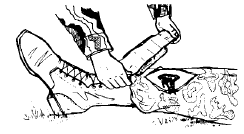
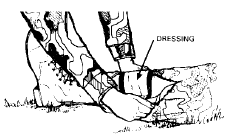
3. Hold the dressing in place with one hand. Use the other hand to wrap one of the tails around the injured part, covering about one-half of the dressing. Leave enough of the tail for a knot. If the casualty is able, he may assist by holding the dressing in place.
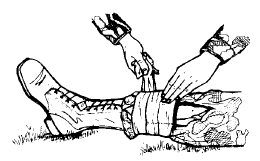
4. Wrap the other tail in the opposite direction until the remainder of the dressing is covered. The tails should seal the sides of the dressing to keep foreign material from getting under it.
5. Tie the tails into a nonslip knot over the outer edge of the dressing. DO NOT TIE THE KNOT OVER THE WOUND. In order to allow blood to flow to the rest of an injured limb, tie the dressing firmly enough to prevent it from slipping but without causing a tourniquetlike effect; that is, the skin beyond the injury should not becomes cool, blue, or numb.
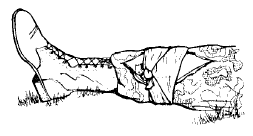
Manual Pressure
1. If bleeding continues after applying the sterile field dressing, direct manual pressure may be used to help control bleeding. Apply such pressure by placing a hand on the dressing and exerting firm pressure for 5 to 10 minutes. The casualty may be asked to do this himself if he is conscious and can follow instructions.
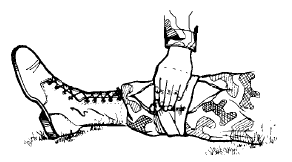
2. Elevate an injured limb slightly above the level of the heart to reduce the bleeding
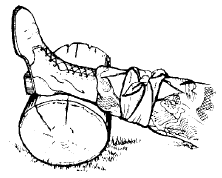
WARNING DO NOT elevate a suspected fractured limb unless it has been properly splinted.
3. If the bleeding stops, check shock; administer first aid for shock as necessary. If the bleeding continues, apply a pressure dressing.
Pressure Dressing
Pressure dressings aid in blood clotting and compress the open blood vessel. If bleeding continues after the application of a field dressing, manual pressure, and elevation, then a pressure dressing must be applied as follows:
1. Place a wad of padding on top of the field dressing, directly over the wound. Keep the injured extremity elevated.
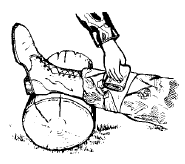
NOTE Improvised bandages may be made from strips of cloth. These strips may be made from T-shirts, socks, or other garments.
2. Place an improvised dressing (or cravat, if available) over the wad of padding. Wrap the ends tightly around the injured limb, covering the previously placed field dressing
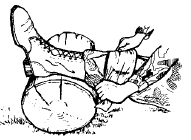
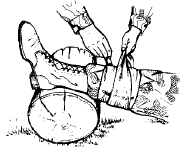
3. Tie the ends together in a nonslip knot, directly over the wound site. DO NOT tie so tightly that it has a tourniquet-like effect. If bleeding continues and all other measures have failed, or if the limb is severed, then apply a tourniquet. Use the tourniquet as a LAST RESORT. When the bleeding stops, check for shock; administer first aid for shock as necessary.
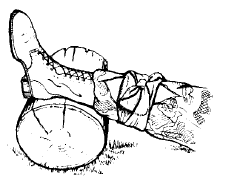
NOTE Distal end of wounded extremities (fingers and toes) should be checked periodically for adequate circulation. The dressing must be loosened if the extremity becomes cool, blue, or numb.
NOTE If bleeding continues and all other measures have failed (dressings and covering wound, applying direct manual pressure, elevating the limb above the heart level, and applying a pressure dressing while maintaining limb elevation) then apply digital pressure